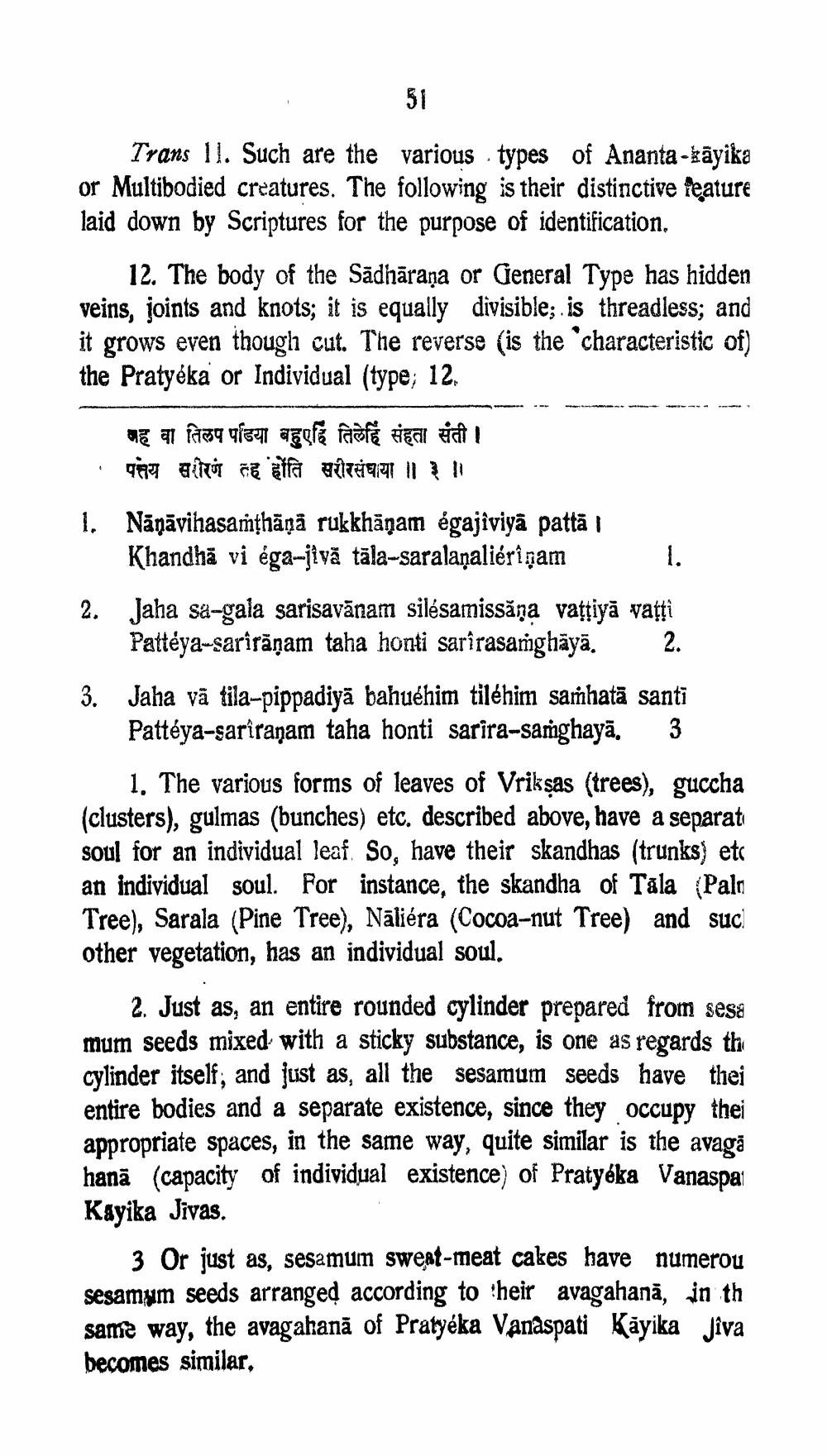________________
Trans 11. Such are the various types of Ananta - tāyika or Multibodied creatures. The following is their distinctive feature laid down by Scriptures for the purpose of identification,
12. The body of the Sadhārana or General Type has hidden veins, joints and knots; it is equally divisible;. is threadless; and it grows even though cut. The reverse (is the characteristic of) the Pratyéka or Individual (type; 12.
मह वा तिलप पडिया बहुएहि तिलेहिं संहता संती । . पत्तय सरीरणं तह होति सरीरसंघाया ॥ ३ ॥
1.
Nāņāvihasamthāņā rukkhāņam égajiviyā pattā Khandhā vi éga-jivă tāla-saralaňaliériņam
2. Jaha sa-gala sarisavānam silésamissăņa vasțiyā vatti
Pattéya-sarirāņam taha honti sarirasamghāyā. 2. 3. Jaha vã tila-pippadiyā bahuehim tiléhim saṁhatā santi
Pattéya-sariraṇam taha honti sarira-samghayā. 3
1. The various forms of leaves of Vriksas (trees), guccha (clusters), gulmas (bunches) etc. described above, have a separat soul for an individual leaf. So, have their skandhas (trunks) etc an individual soul. For instance, the skandha of Tala (Palo Tree), Sarala (Pine Tree), Nāliéra (Cocoa-nut Tree) and suc! other vegetation, has an individual soul.
2. Just as, an entire rounded cylinder prepared from sesa mum seeds mixed with a sticky substance, is one as regards the cylinder itself, and just as, all the sesamum seeds have thei entire bodies and a separate existence, since they occupy thei appropriate spaces, in the same way, quite similar is the avagā hanã (capacity of individual existence) of Pratyéka Vanaspai Kayika Jivas.
3 Or just as, sesamum sweat-meat cakes have numerou sesamym seeds arranged according to heir avagahanā, in th same way, the avagahanā of Pratyéka Vanaspati Kāyika Jiva becomes similar,




